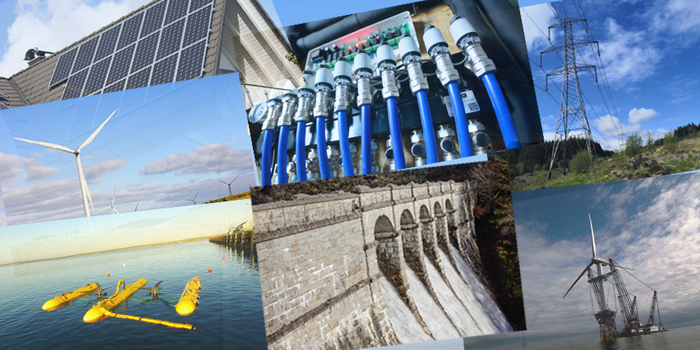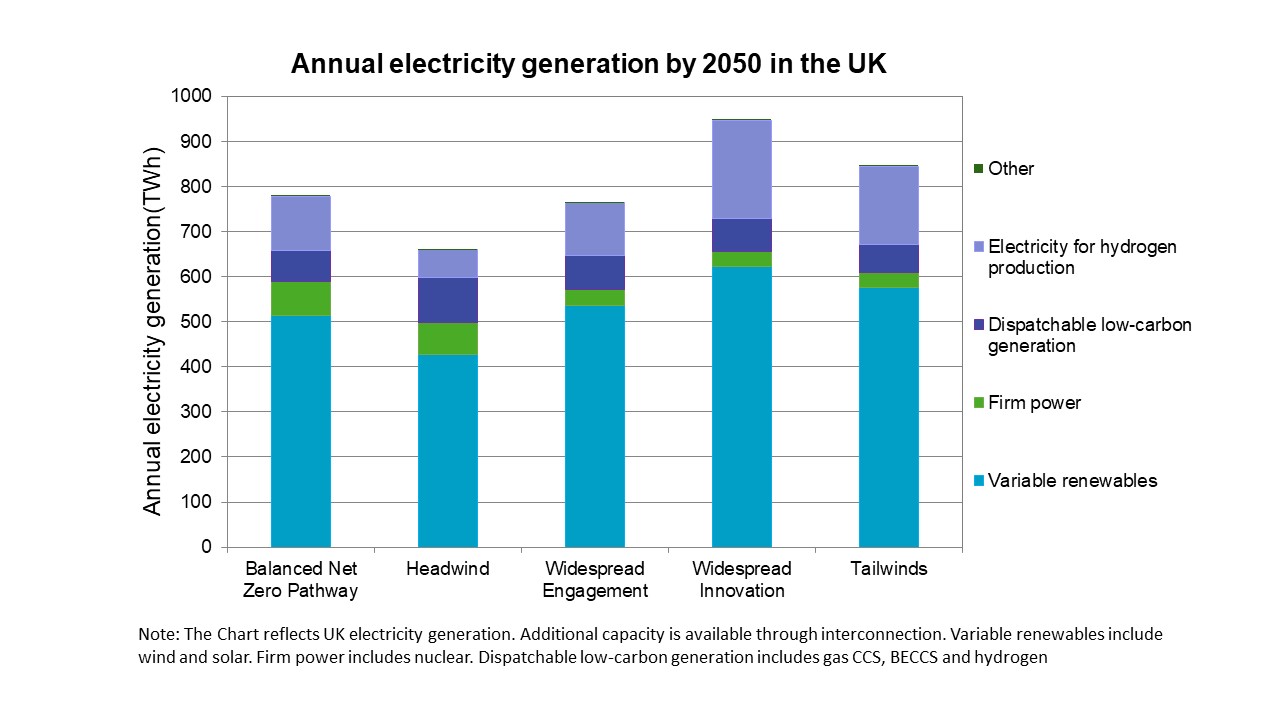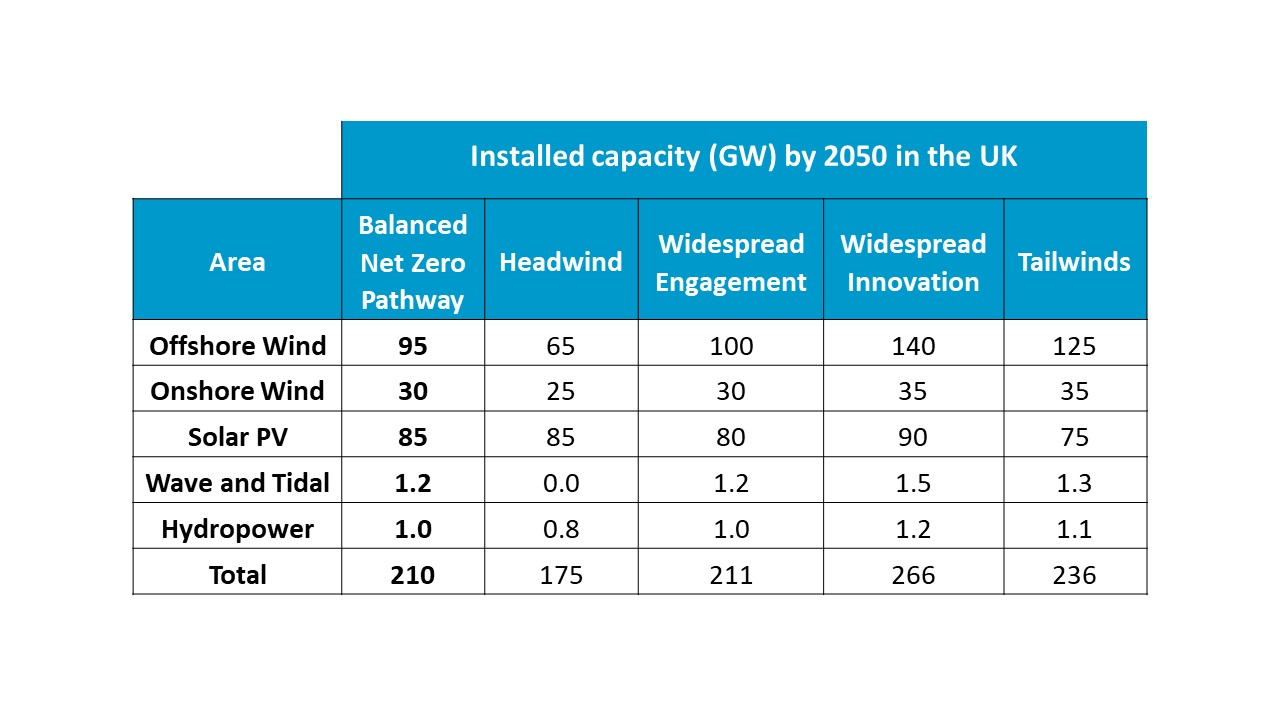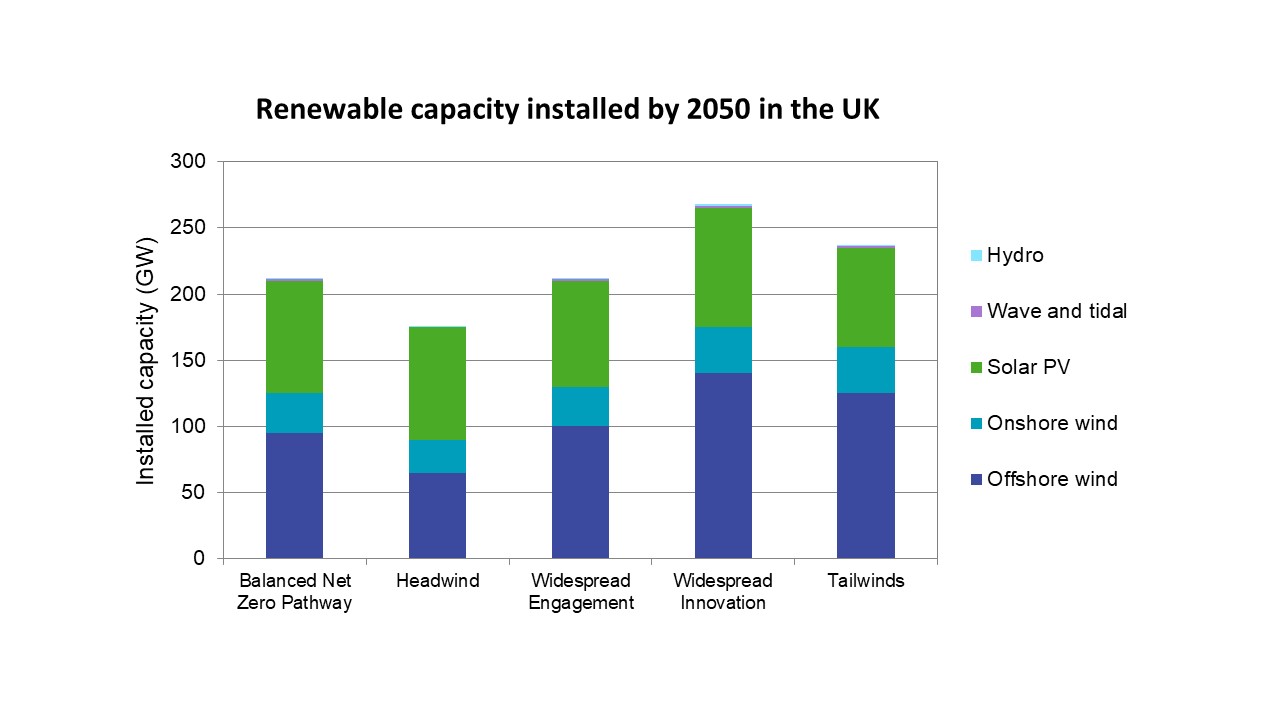Deployment levels in The Sixth Carbon Budget

The Climate Change Committee (CCC), the UK Governments independent adviser on emissions targets and climate change, published The Sixth Carbon Budget report in December last year which sets out, for the first time, what actions the UK will need to take to achieve net-zero by 2050.
One of these actions outlined in the report is the deployment of high levels of renewable energy technology across the country by 2050, which will be critical to phase out the current level of fossil fuels in the energy mix.
The CCC developed a detailed analysis of the electricity generation sector that was used to inform the Committee’s advice in The Sixth Carbon Budget. This analysis includes policy recommendations and is accompanied by a full dataset and supporting evidence.
However, the deployment levels of different renewable energy technologies included in the CCC’s Sixth Carbon Budget is not immediately obvious.
Scottish Renewables has analysed the details of the methodology that accompanies the Budget and will outline the findings in this blog.
Renewable Energy Deployment by 2050 in the UK
The CCC outlines 5 scenarios in The Sixth Carbon Budget with different levels of renewable energy deployment to reach net-zero by 2050:
- Headwinds scenario: This scenario is based on behaviour change and new technology development, but we do not see widespread behavioural shifts or innovations that significantly reduce the cost of green technologies ahead of the CCC‘s current projections. This scenario is more reliant on the use of large hydrogen and carbon capture and storage (CCS) infrastructure to achieve net-zero.
- Widespread Engagement scenario: In this scenario the CCC assumes higher levels of societal and behavioural changes. People and businesses are willing to make more changes to their behaviour which reduces demand for the most high-carbon activities and increases the uptake of some climate mitigation measures. Assumptions on cost reductions are similar to Headwinds.
- Widespread Innovation scenario: The CCC assumes greater success in reducing costs of low-carbon technologies. This allows more widespread electrification, a more resource and energy-efficient economy and more cost-effective technologies to remove CO2 from the atmosphere. Assumed societal/behavioural changes are similar to Headwinds.
- Balanced Net-Zero Pathway scenario: This scenario is informed by the range of solutions across the 3 previous scenarios that would put the UK on track to net-zero and would meet the recommended carbon budget.
According to the CCC assessment, this scenario is considered plausible and is the basis of the advice in their report. - Tailwinds scenario: This scenario assumes success of both innovation and societal/behavioural change and goes beyond the Balanced Pathway to achieve net-zero before 2050.
The following graph illustrates the annual electricity generation by 2050 across all scenarios. In the figure we can see that renewable electricity would represent the highest proportion of generation across all scenarios, with values between 75% and 90 % of total generation.

The following table and graph show the installed capacity per renewable technology by 2050 across all scenarios.

The values for offshore wind, onshore wind and solar PV were deduced directly from the CCC report, while the values for wave and tidal, and hydropower were calculated as follows:
- Wave and tidal: A very conservative scenario is assumed. This considers that in the Balanced Pathway scenario all the capacity in the pipeline today (1.2 GW) is deployed by 2030 and maintained by 2050. For the rest of the scenarios the value is calculated proportional to the electricity generation.
- Hydropower: A conservative scenario is also assumed. This considers 1 GW of deployment by 2050 in the Balanced Pathway scenario. For the rest of the scenarios the value is calculated proportional to the electricity generation.

In these figures we can see that offshore wind and solar PV will represent more than 70 % of the total renewable capacity installed by 2050, followed by onshore wind, which will double the current capacity to 25-35 GW across all scenarios. For the case of other technologies such as wave and tidal, the levels of deployment will depend on government support.
What will this level of renewable deployment mean?
All scenarios set out in The Sixth Carbon Budget rely on the sustained growth of the UK's onshore and offshore wind capacity. For both technologies this will require regular Contracts for Difference auctions, or their replacement, bringing forward sufficient capacity.
The onshore planning and offshore leasing and consenting systems will also need to operate at greater speed and capacity to facilitate investment in project development and reach the levels of deployment required.
Offshore wind will become a critical technology by 2050, so coordinate interconnectors and offshore networks for these wind farms and their connections to the onshore network will also be essential.
In addition, the UK needs to rapidly increase the installation of solar PV to meet the CCC's net-zero energy mix. Historically much of this deployment has been in England, but this balance could shift, particularly if we see large-scale adoption of rooftop solar by public bodies.
The level of deployment of nascent technologies such as wave and tidal will depend on the level of support from Government and the speed at which these technologies reach commercialisation.
All scenarios rely on hydrogen production and gas removals, which means that major infrastructure changes will be required.
The levels of renewable technology deployment will require accelerated electrification, and investments will be needed for storage, transmission and distribution capacity, and for flexible generation and demand-response.
Even though the deployment of new infrastructure and storage capacity will require high levels of investment, the CCC found that the net costs of the transition (including upfront investment, ongoing running costs and costs of financing) will be less than 1% of GDP over the entirety of 2020-2050.
Scottish Renewables’ Annual Conference on March 23 – 24 will discuss these issues and more as we consider the role that Scotland’s abundant natural resources, innovative technologies and skills can play as we work towards achieving net-zero.
- More information on Scottish Renewables’ Annual Conference is available here.